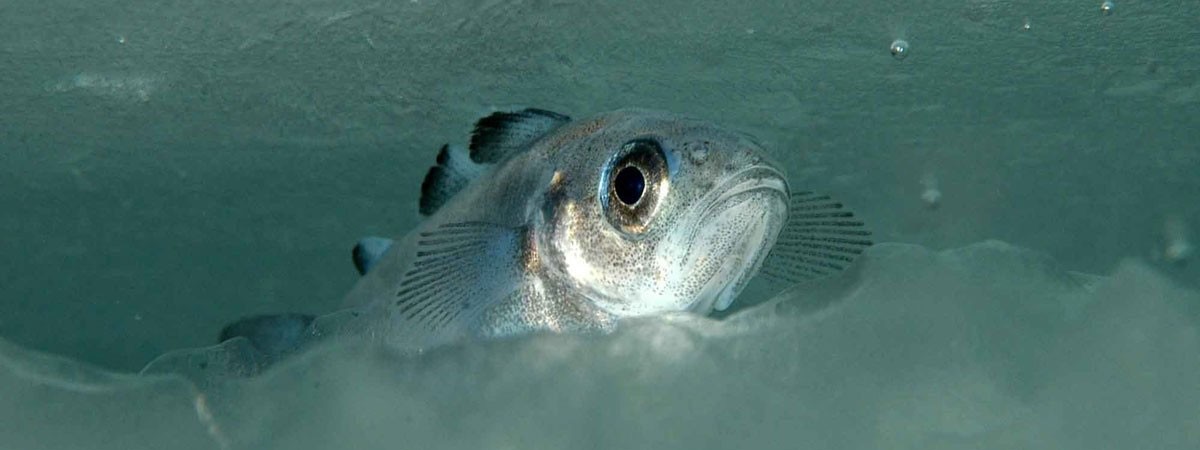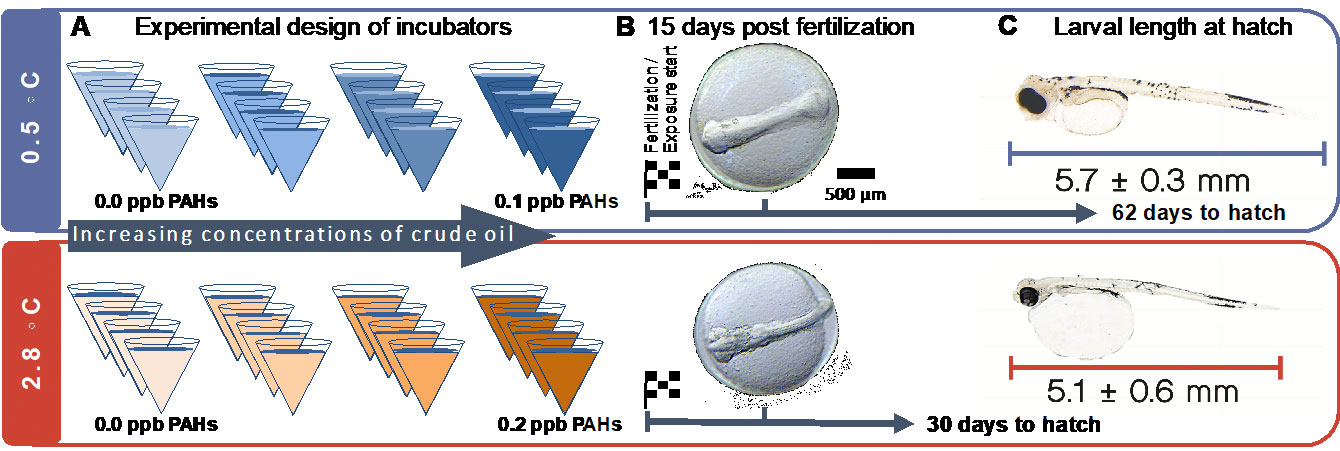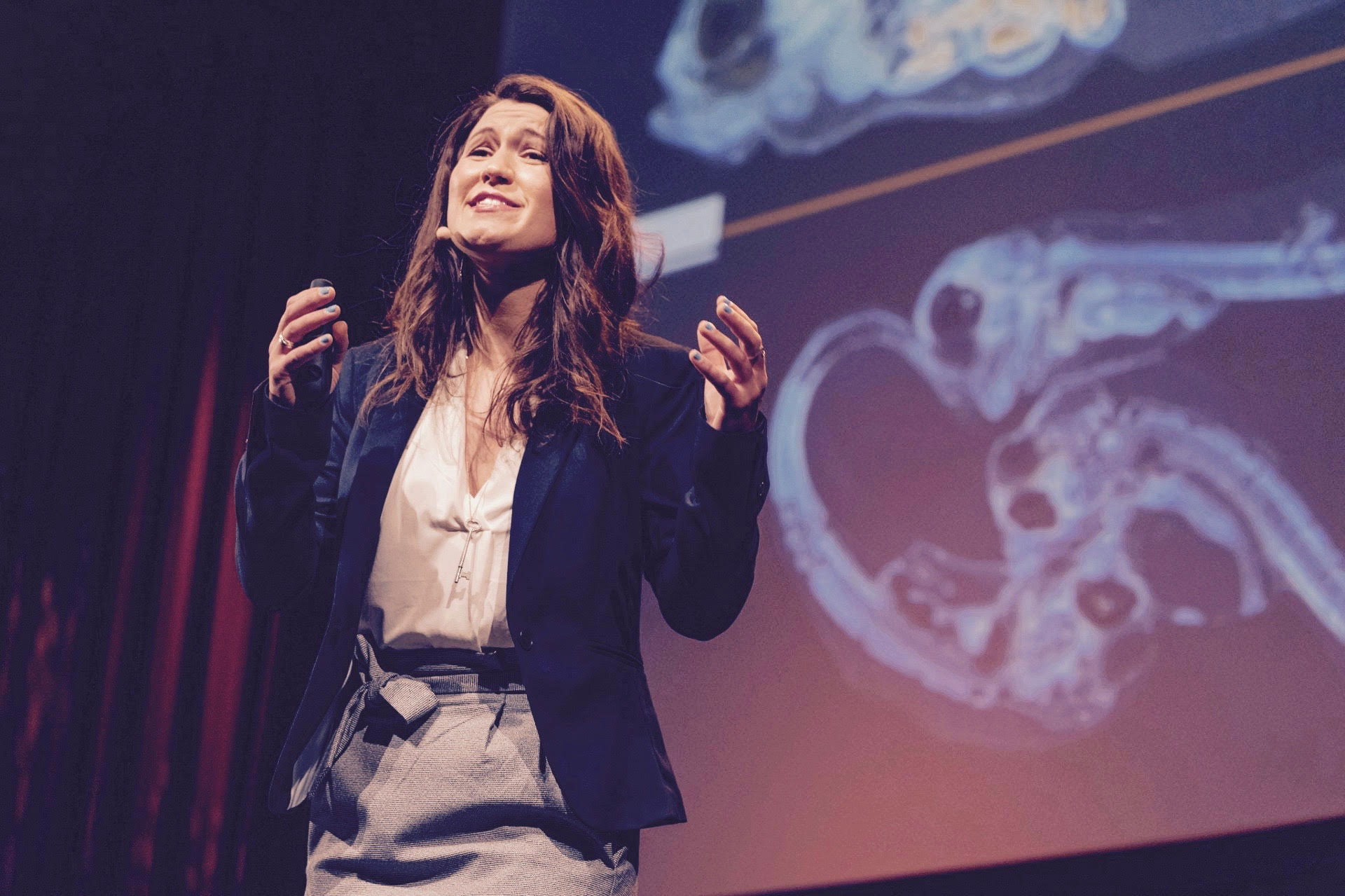
Polar cod early life stages up against a changing Arctic
By: Morgan L Bender and Jasmine Nahrgang // UiT The Arctic University of Norway, Institute of Arctic and Marine Biology, and Marianne Frantzen // Akvaplan-niva
The life of a polar cod starts during the polar night in a cloud of eggs and sperm released by their parents. Despite the ecological importance of polar cod, their spawning behaviour is relatively unknown. Fertilisation of the eggs by the highly active sperm marks the start of a long (60-day) incubation period at the surface of the ocean, beneath sea ice. Upon outgrowing their protective egg shells, small larvae wriggle out and rely on their large nutrient-rich yolk sacs to give them time to develop and grow before they must start to actively feed. With luck, the timing of fertilisation and hatching puts the 5-mm long larvae in a prime spot to feast on the spring bloom of copepod nauplii in the upper water column. Within months, the larvae become quicker, more pigmented, and metamorphose into juvenile polar cod before descending to depth as mature individuals.

Defining sensitivity
Eggs and larvae are sensitive. They must quickly achieve many developmental milestones, but have a limited energy supply, and are unable to move away from threats. The risk of embryos coming in contact with dissolved oil components from accidental petroleum discharges or passing ships is greatest in surface waters. Simultaneously, the extent of their habitat – sea ice – is shrinking in the Arctic owing to warming surface waters.
Even low levels of pollutants and minute changes in temperature can have irreversible effects on the early development of fishes.
To assess the sensitivity of early life stages of polar cod from fertilisation to active feeding, we conducted a 170-day trial where embryos were exposed both to low levels of crude oil dissolved in water and to water 2.3°C warmer than their optimal development temperature of 0.5°C. Our aim was to assess the sub-lethal physiological and behavioural effects that thermal stress has on the sensitivity of embryos and larvae to petroleum pollution.
ADVERTISEMENT
How low can we go?
This study underscored the glacially slow embryonic development of polar cod, testing the patience of even the most dedicated researcher. Meanwhile, the water temperatures we used were low enough to replicate the frigid environmental temperatures where polar cod embryos thrive. Our warmest water hovered at a teeth-chattering 2.8°C – a “hot” temperature that has already been seen north of the polar front in the Barents Sea. The crude oil levels we used were infinitesimal. Concentrations of polycyclic aromatic hydrocarbons in the water at the beginning of the experiment were an order of magnitude below what has been found after accidental and experimental oil spills in the ice – even below water quality standards for Alaska! The polycyclic aromatic hydrocarbon levels decreased exponentially with time, reaching background concentrations by the time hatching occurred in each temperature group.
Disentangling effects
Statistical models allow us to explore the effects of a multi-stressor experiment on many aspects of the early biology. Temperature has a profound effect on the timing of development for such a cold-water species. With a difference of 2.3°C, we found a full month difference in hatching time. Our data reveal that embryos incubated at 2.8°C hatched in a less developed state, not taking the time to develop a face and jaws until after hatching. Larvae got their sustenance from their large yolk reserves until they could begin active feeding. We found that even at our miniscule exposure levels, equivalent to just 0.2 ppb of polycyclic aromatic hydrocarbons, egg buoyancy, larval growth, survival, onset of feeding, and behavioural response to additional stresses were affected. Lastly, increased prevalence of deformities and decreased feeding activity eventually led to starvation and death several weeks after hatching.
What’s worse for polar cod, heat or oil?
Comparing the multigenerational, long-term changes that a warming climate might evoke, and the possible effects of an acute, local oil spill – studying both in the same experiment – is not a simple task. We see that sub-optimal (i.e. warm) temperature alters the timing and development of polar cod and increases their sensitivity to low levels of petroleum pollution. However, the population-wide impact of adverse effects on early life stages of polar cod is more complex.
Compared with their bigger cousin the Atlantic cod, female polar cod produce fewer but larger eggs – and their personal investment is extremely high.
In fact, both male and female polar cod invest over half their body weight into their reproductive organs as spawning nears. Thus, polar cod may not be as resilient to having a bad batch of eggs and larvae as other fish species, such as Atlantic cod, who have more eggs per batch and can spawn many times over their long life.
Polar cod in the Barents Sea have already exhibited population decline and altered life history in warmer, more Atlantic-influenced areas of the Arctic. Although spawning locations may shift northward to ensure the low-temperature embryos need for development, there is no guarantee that these areas will provide adequate nursery and feeding grounds for larvae. While this may be speculation, the studies in our lab indicate that in a warmer, more polluted Arctic, the early life stages of polar cod will feel the heat.
Communicating the process
Spending 170 days in an Arctic-simulating wet lab babying organisms almost too small to see may be a common experience among polar researchers, but we thought we should share it beyond our traditional circles. We, therefore, invited several local high school classes to join us for parts of our experiment. Four master students were involved in all aspects of the experiment and helped manage our social media presence on Facebook and Instagram. Additional attention was brought to the project through the newspaper Nordlys and through the regional Researcher Grand Prix competition in Tromsø.

This story is originally published by the Fram Forum


